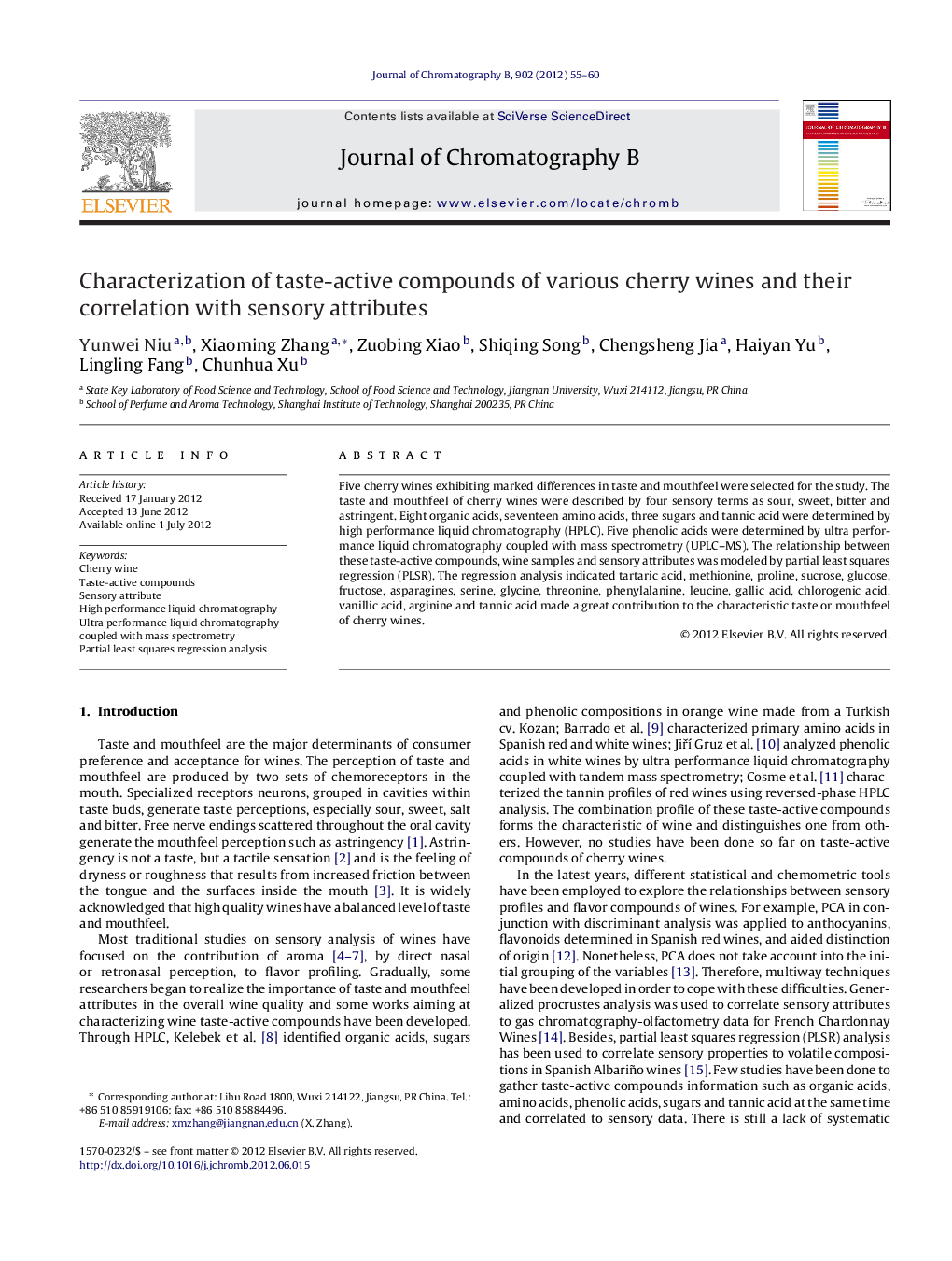| Article ID | Journal | Published Year | Pages | File Type |
|---|---|---|---|---|
| 1213392 | Journal of Chromatography B | 2012 | 6 Pages |
Five cherry wines exhibiting marked differences in taste and mouthfeel were selected for the study. The taste and mouthfeel of cherry wines were described by four sensory terms as sour, sweet, bitter and astringent. Eight organic acids, seventeen amino acids, three sugars and tannic acid were determined by high performance liquid chromatography (HPLC). Five phenolic acids were determined by ultra performance liquid chromatography coupled with mass spectrometry (UPLC–MS). The relationship between these taste-active compounds, wine samples and sensory attributes was modeled by partial least squares regression (PLSR). The regression analysis indicated tartaric acid, methionine, proline, sucrose, glucose, fructose, asparagines, serine, glycine, threonine, phenylalanine, leucine, gallic acid, chlorogenic acid, vanillic acid, arginine and tannic acid made a great contribution to the characteristic taste or mouthfeel of cherry wines.
► Four sensory attributes of 5 cherry wines were evaluated. ► Thirty-three compounds were correlated to sensory attributes and wine samples through PLSR. ► Seventeen compounds mostly contributed to sensory attributes of cherry wines.
